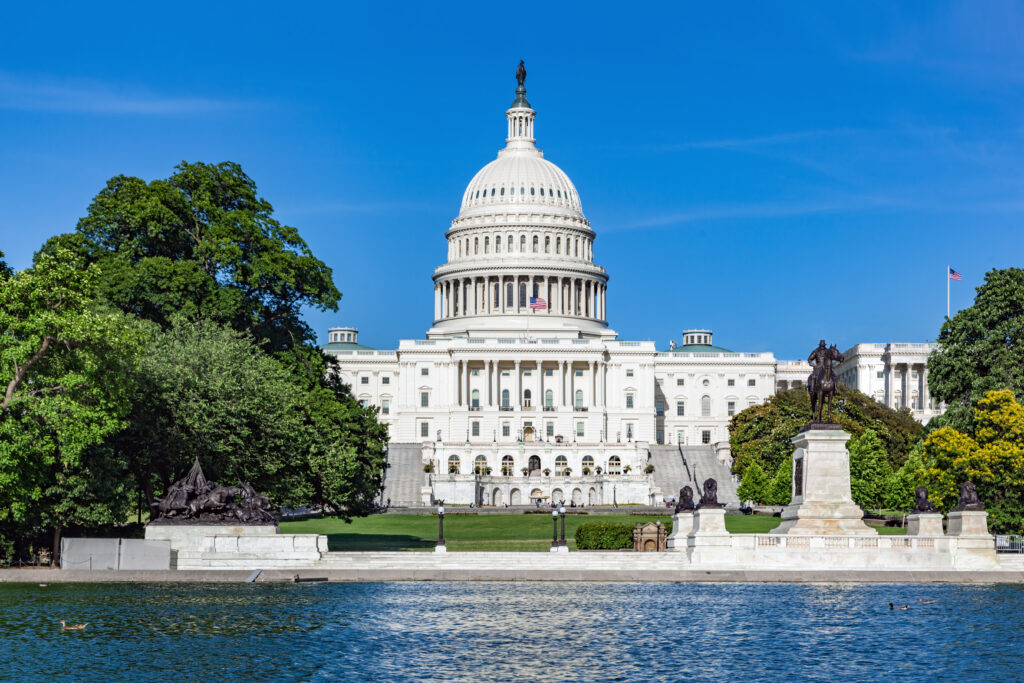Flurry of activity confronts legislators amid the pandemic.
It’s been quite a week in D.C. First, I’m going to touch on just four events that happened in Washington that impact the healthcare industry:
- Good news first: the president signed a continuing resolution last Wednesday that will keep the federal government open until early December. As we reported last week, the continuing resolution also eased repayment requirements on the Medicare Accelerated and Advance Payments program. It allows repayments to start one year after a loan is issued, gives providers more time to pay it back, and puts the interest at 4 percent instead of 10 percent.
- The U.S. Department of Justice executed the largest takedown of healthcare fraud in its history, to the tune of $6 billion. The majority of the fraud was associated with telemedicine, through which both commercial and government health plans were bilked. The scheme went something like this: genetic testing labs and pharmacies paid telehealth companies, which then paid physicians to order unnecessary medicine, equipment, and tests after the doctors had brief – or completely fabricated – telehealth visits with patients.
- We’re hearing word that the administration may push back the compliance date for the Interoperability Rule (again). You may recall that, although the rule is effective Jan. 1, 2021, the administration allowed for enforcement discretion until July 2021 – basically moving the compliance date back six months. And now it may be pushed back again. A draft of a regulation outlining new dates is at the Office of Management and Budget, basically the last phase of review. At this point, however, we don’t know what the regulation will set for the new compliance dates.
- The president testing positive for COVID-19 has had a number of different downstream effects:
For one, the president’s positive test has made another congressional COVID relief package more likely. While at the hospital this weekend, the president tweeted his support for it, and House Speaker Nancy Pelosi said that the negotiations are pressing ahead. The outstanding issue is still the matter of funding, with the Democrats wanting $2.2 trillion and the White House sticking with $1.6 trillion, but they’re closer than they’ve ever been before.
Second, the Senate was expected to resume business today, but along with the president, three Republican senators also tested positive last week, and two others are quarantining. So Senate Majority Leader Mitch McConnell has postponed the Senate’s return for two weeks. Republicans are still expecting to nominate Judge Amy Coney Barrett to the U.S. Supreme Court, but if the Senate is still having trouble with attendance later this month, it will be more difficult for them to get that done before the election.
As I’ve written about before, if Judge Barrett is confirmed before the election, she will likely take part in the Texas v. Azar, in which a group of states seeks to overturn the Patient Protection and Affordable Care Act. Although we cannot predict what impact her participation will have, Judge Barrett has written critically about the law in the past.
This past Thursday, the president also signed an executive order titled “An America-First Healthcare Plan.” As I’ve written in the past, executive orders can’t establish any new laws, but they do signal areas in which the president is going to concentrate and expend resources. In particular, Thursday’s executive order provides an idea of Trump’s healthcare agenda going into the election.
The executive order summarized the administration’s actions on healthcare over the past four years, and a number of principles emerged:
First, this administration has focused on consumer choice and consumer-driven healthcare; as examples, the executive order cited new flexibilities in health savings accounts, and the establishment of association health plans and other short-term health plans.
Next, the executive order made clear that the healthcare policy under this administration is and will be mostly carried out under administrative and executive actions, with some exceptions. From the executive order and the president’s speech rolling it out, it appears that no broad healthcare reform will be proposed to Congress by this administration.
The executive order also referenced what the administration will do in the future. Again, no new laws were cited, but the president promised he would continue to provide protections for people with pre-existing conditions if his administration is successful in overturning the Patient Protection and Affordable Care Act, where the protections currently sit. The administration also promised to push Congress to prohibit balance billing, to continue to require more healthcare price transparency, and to continue to work on decreasing drug prices.
Programming Note: Matthew Albright is a permanent panelist on Monitor Mondays. Listen to his legislative update sponsored by Zelis, Mondays at 10 a.m. EST.













